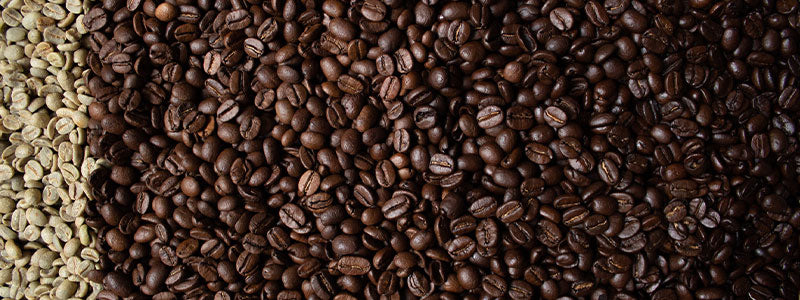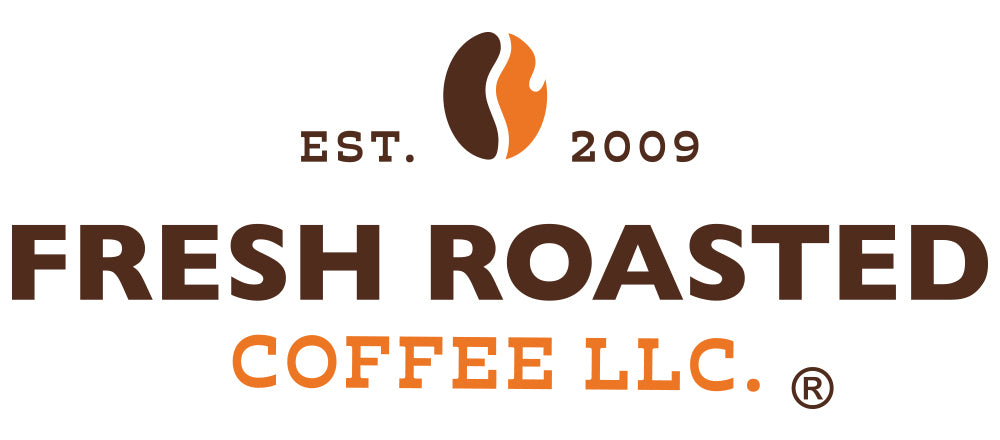Types of Coffee Roasts & Coffee Flavor Profiles

Determine Your Preferred Coffee Roast Level

Light Roast Coffee
Light roast coffee beans are light brown in color and are a preferred roast for more mild-bodied coffees. Light roast coffee should not have any oil on the surface of the coffee beans. If you prefer light, fragrant, floral or fruity coffee notes - you'll enjoy a light roast coffee.
AKA: Light City, Half City, Cinnamon, New England

Medium Roast Coffee
Medium roast coffee is medium brown in color with a non-oily surface. Traditionally, a medium roast is the most preferred type of coffee roast in America. If you prefer a flavorful, traditional cup of coffee you'll enjoy a medium roast.
AKA: City, American, Breakfast

Medium-Dark Roast Coffee
Medium-dark roast coffee beans are a rich, dark brown color with a semi-oily surface. This type of roast produces a modest bittersweet aftertaste. If you prefer slight bittersweet notes and deep flavors, you'll enjoy a medium-dark roast.
AKA: Full City

Dark Roast Coffee
Dark roast coffee beans are nearly black, oily and produce a noticeable bitterness. The darker the coffee bean, the less acidity will be present in the coffee. If you prefer a heavy mouthfeel and strong flavor, you'll enjoy a dark roast coffee.
AKA: High, Continental, New Orleans, European, Espresso, Viennese, Italian, French
Determine Your Preferred Coffee Flavor Profile
Mild
Coffee with a mild body is not sharp, pungent or strong. Many light roast coffees normally possess a mild flavor profile.
Bold
Coffee with a bold body has a strong and noticeable flavor. Coffees from medium to dark roast levels normally possess a bold flavor profile.
Extra Bold
Coffee with an extra bold body has flavors that are extremely strong and pronounced. Dark roast coffees normally possess an extra bold flavor profile.

28 Comments
What do you suggest for espresso. Both roast level and specific beans? And do you have a recommendation for decaf espresso? I’m having a hard time finding one that works – that is, that doesn’t run through too fast no matter what the grind and which tastes good. Thanks for all of your good work! Laura
Hello, roughly how much caffeine is in the half calf pods? I am only allowed 200 mg a day
I really love your coffee and get whole roasted beans. I blend 2 parts Monsoon Indian decaf with one part Mocha Java to give me a really good tasting coffee with less caffeine that I can drink all day. Do you have a recommendation on the fineness of the grind to make the best cup of coffee. What would you recommend. We use a Braun 12 cup drip coffee maker. We are searching for the best grind. What do you suggest?
I don’t see anything on your site that they are 100% arabica beans
I have been buying your unroasted coffee for some time. I love the Tanzania Peaberry and Costa Rican roasted just to the start of the second Crack. My question is do you have other green beans that you feel would compliment the blend or another blend similar? Looking for that perfect cup with a nice fruity flavor with undertones of smooth rich flavor that pops without the dark roast deep nutty flavor.
Will beans keep indefinitely (years) with regards to their freshness if vacuum sealed and stored in a light free environment? Does temperature factor in? Room temp vs cold temp vs freezing temp?
Leave a comment